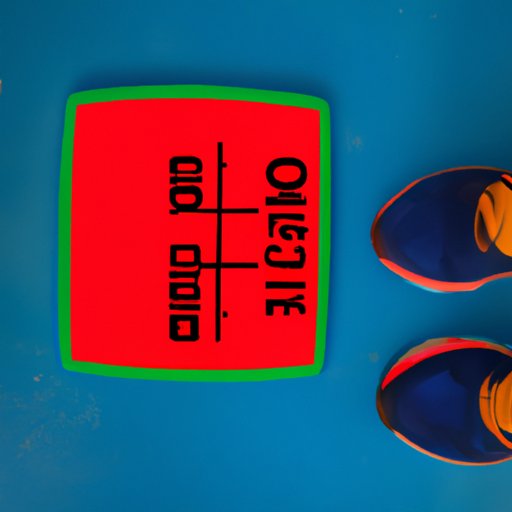
Introduction
Many people struggle to lose weight, and despite the prevalence of step counters and smartwatches, they still struggle to determine how many steps per day are necessary to achieve their weight loss goals. This article will provide a comprehensive guide on how many steps you need to lose weight, including the science behind it, the benefits of walking, and tips for including more steps in your daily routine.
The Importance of Tracking Steps
A step counter is a device that tracks how many steps you take throughout the day. Tracking your steps is important because it allows you to monitor how much physical activity you’re getting and identify patterns. Additionally, tracking your steps can help you set realistic goals and track your progress towards achieving them.
The Science Behind Steps
Walking a certain number of steps each day can stimulate weight loss by increasing energy expenditure and boosting metabolism. This is because walking requires your body to burn calories, which can help you shed unwanted pounds over time.
The Benefits of Walking
To achieve optimal weight loss, it is recommended that you take 10,000 steps each day. Taking this many steps can help you shed unwanted pounds and offers numerous cardiovascular and psychological benefits. Walking has been shown to reduce the risk of chronic diseases, such as heart disease and diabetes, and can improve mood and energy levels.
Tips for Reaching Your Daily Step Goal
If you struggle to hit your daily step goal, there are numerous ways to incorporate more steps into your daily routine. For example, try taking the stairs instead of the elevator, parking further away from your destination, or taking a walking break during your workday. These simple changes can add up to significant increases in your step count and offer numerous health benefits.
The Role of Intensity
Varying your walking pace can also improve weight loss. Low-intensity steady state (LISS) and high-intensity interval training (HIIT) are two approaches to walking that can maximize weight loss. LISS involves walking at a moderate pace for an extended period, while HIIT involves alternating between short bursts of high-intensity exercise and periods of rest.
Walking for Weight Loss
Combining a step count goal with dietary changes can lead to optimal weight loss results. A balanced diet rich in whole foods and lean proteins can complement a walking routine, providing your body with the nutrients it needs to fuel your physical activity and support weight loss.
Conclusion
Walking is an effective way to lose weight that can offer numerous cardiovascular and psychological benefits. To achieve optimal weight loss and enjoy these benefits, try to take 10,000 steps per day and incorporate LISS and HIIT training into your routine. Combine this with a healthy and balanced diet that supports your physical activity levels, and you’ll be on your way to achieving your weight loss goals in no time.





